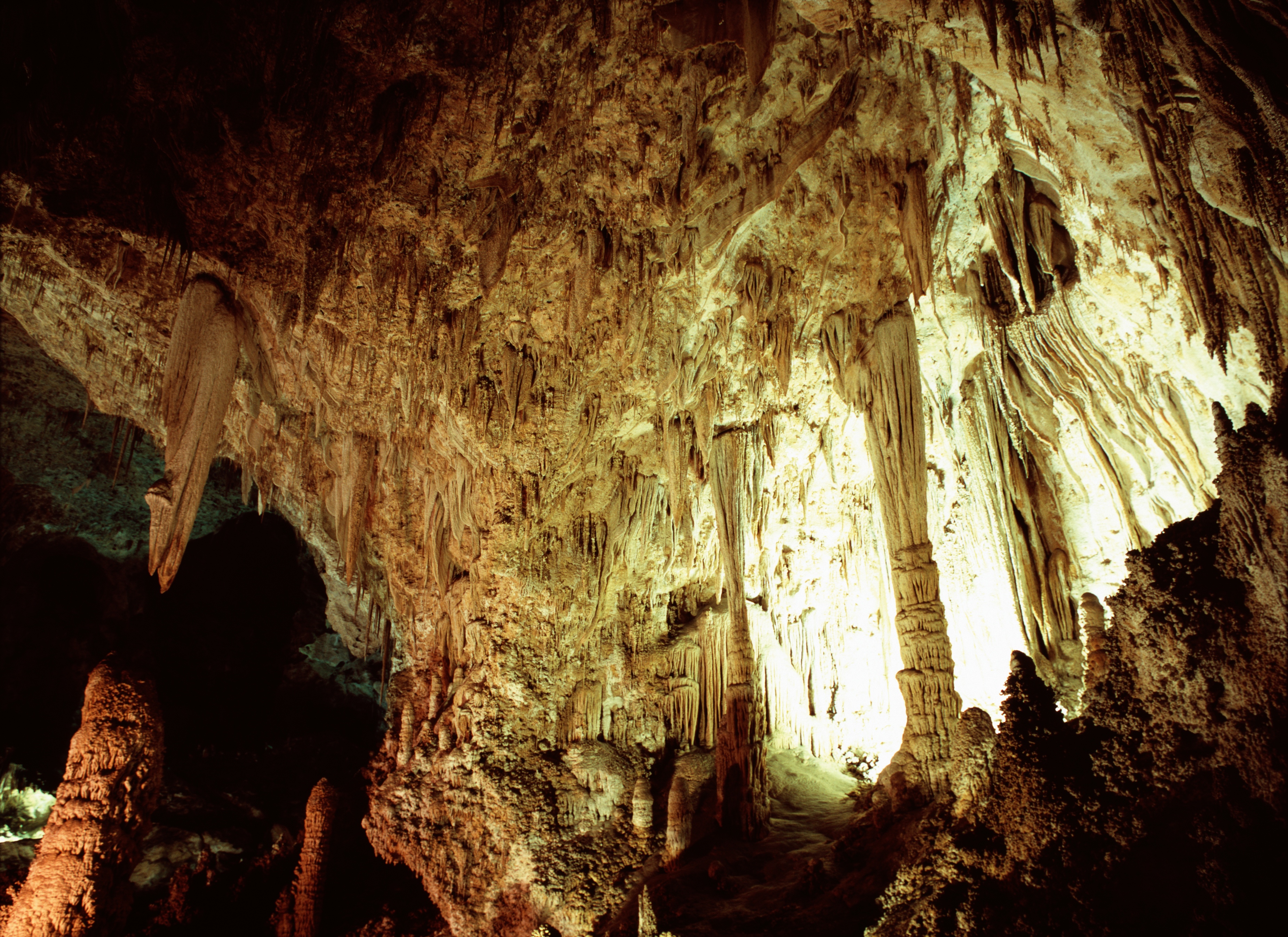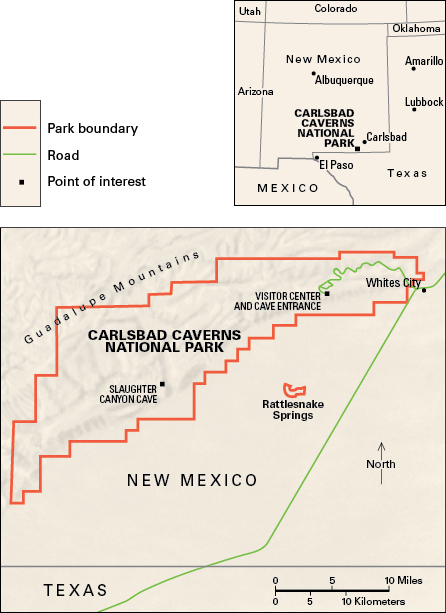Carlsbad Caverns National Park, in southeastern New Mexico, is famous for its many caverns, or caves. The largest of these caverns is Carlsbad Caverns. Carlsbad is one of the biggest underground caverns in the world. In the chambers of Carlsbad Caverns, stalactites and stalagmites form shapes that resemble Chinese temples, heavy pillars, and lacy icicles (see Stalactite ; Stalagmite ). One large chamber is called the Big Room. It measures 1,800 feet (550 meters) long and 1,100 feet (335 meters) wide. At one point, the ceiling is 255 feet (78 meters) high. Such animals as foxes, gophers, jack rabbits, mule deer, and rattlesnakes live in the park. The park is also home to hundreds of kinds of birds and insects. The national park was established in 1930. For its area, see National Park System (table: National parks) .

Most passages in Carlsbad Caverns have been explored. Unexplored areas still exist, however. Two levels, at 750 feet (229 meters) and 830 feet (253 meters) underground, may be reached by trail from the natural entrance. They may also be reached by elevator. One part of the caverns contains hundreds of thousands of bats. Paintings on the wall of the entrance to Carlsbad Caverns show that Indians visited the mouth of the caverns.

Carlsbad Caverns is part of a huge limestone formation. Geologists believe the caverns formed 4 million to 6 million years ago. Water rich in hydrogen sulfide began to seep into cracks in the limestone. This water mixed with rainwater to form sulfuric acid. The acid dissolved the limestone along folds and fractures in the rock to form the caverns. The stalactites and stalagmites in the caverns developed when water seeped through cracks in the limestone and deposited dissolved minerals.
